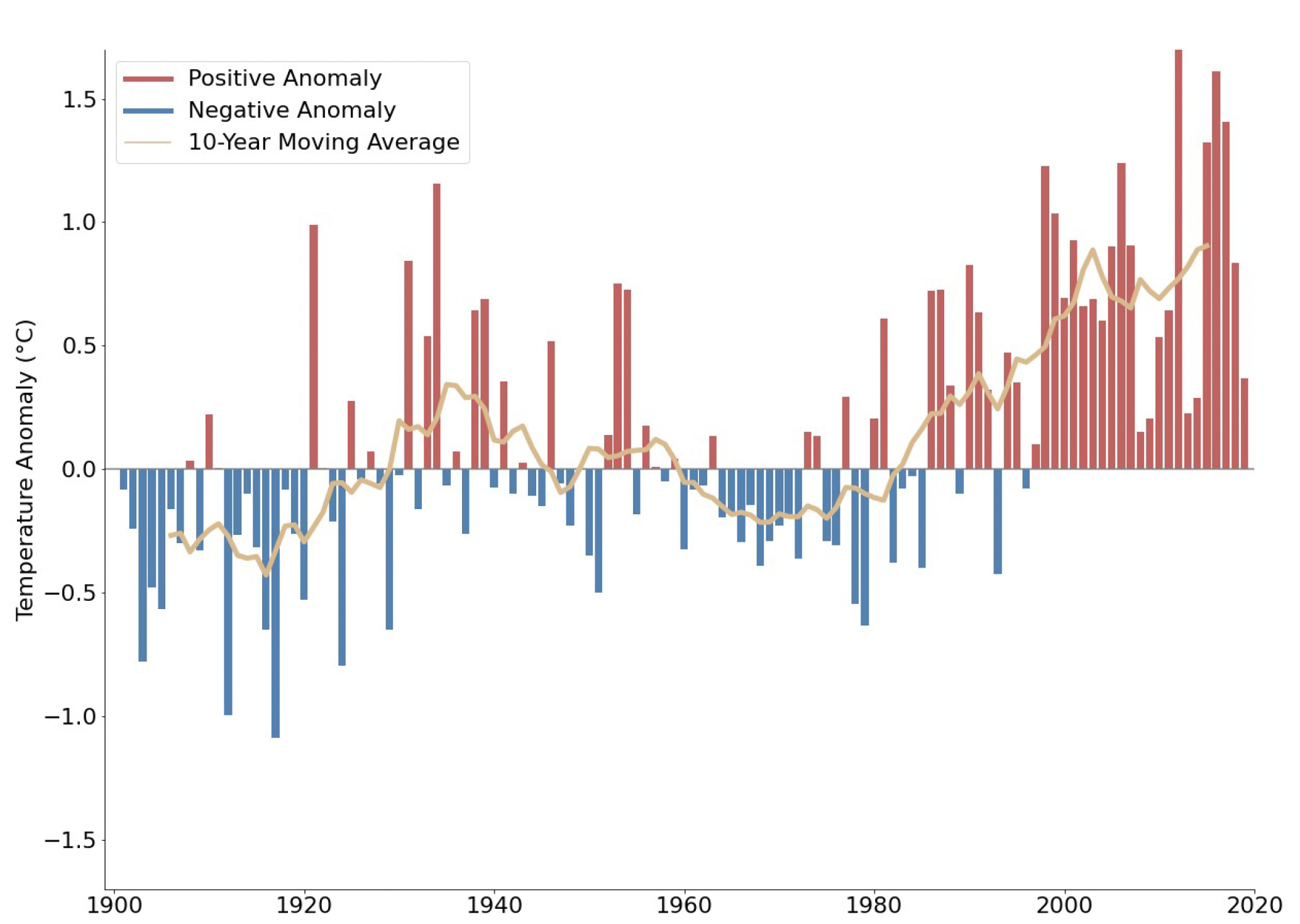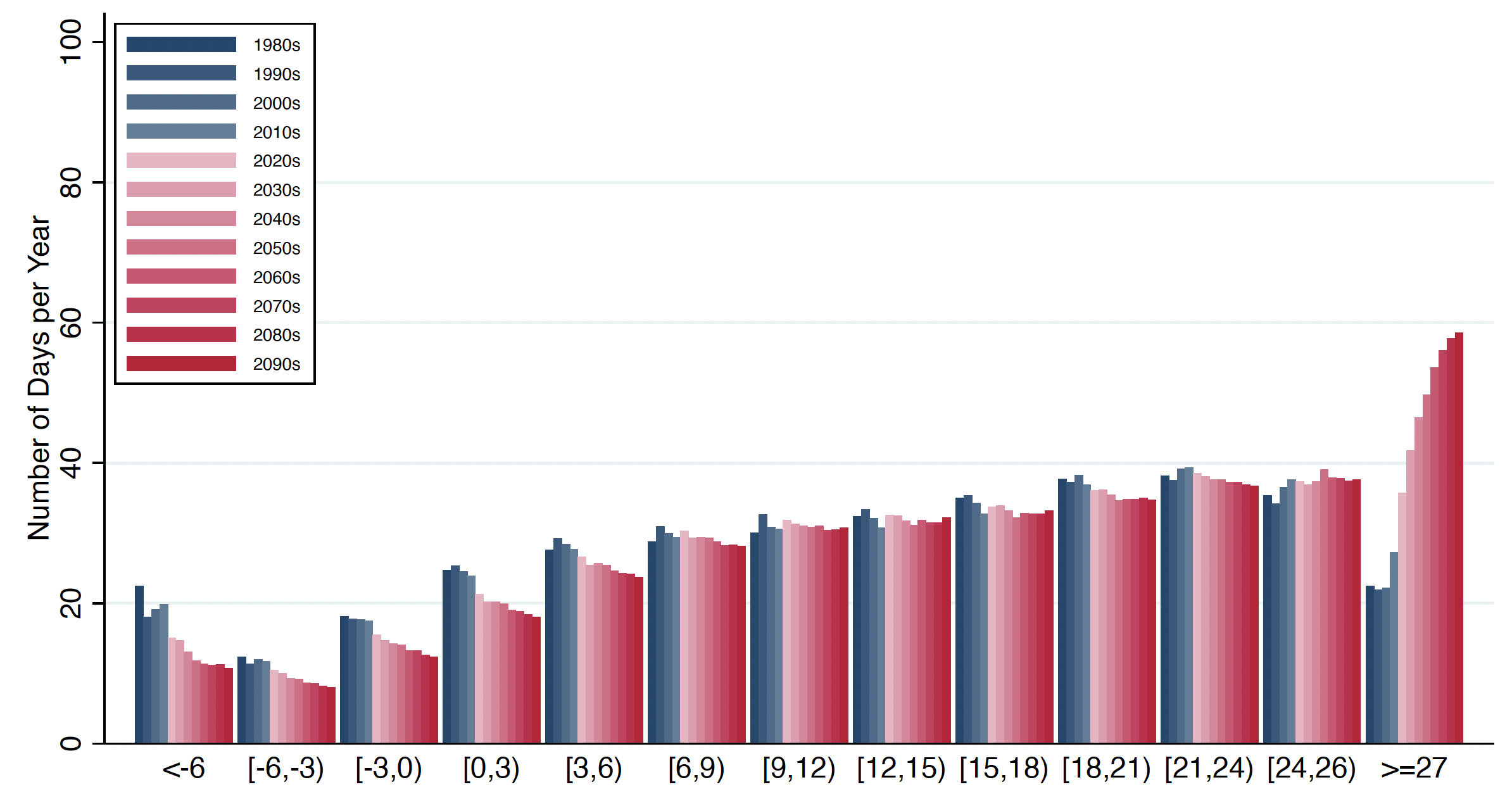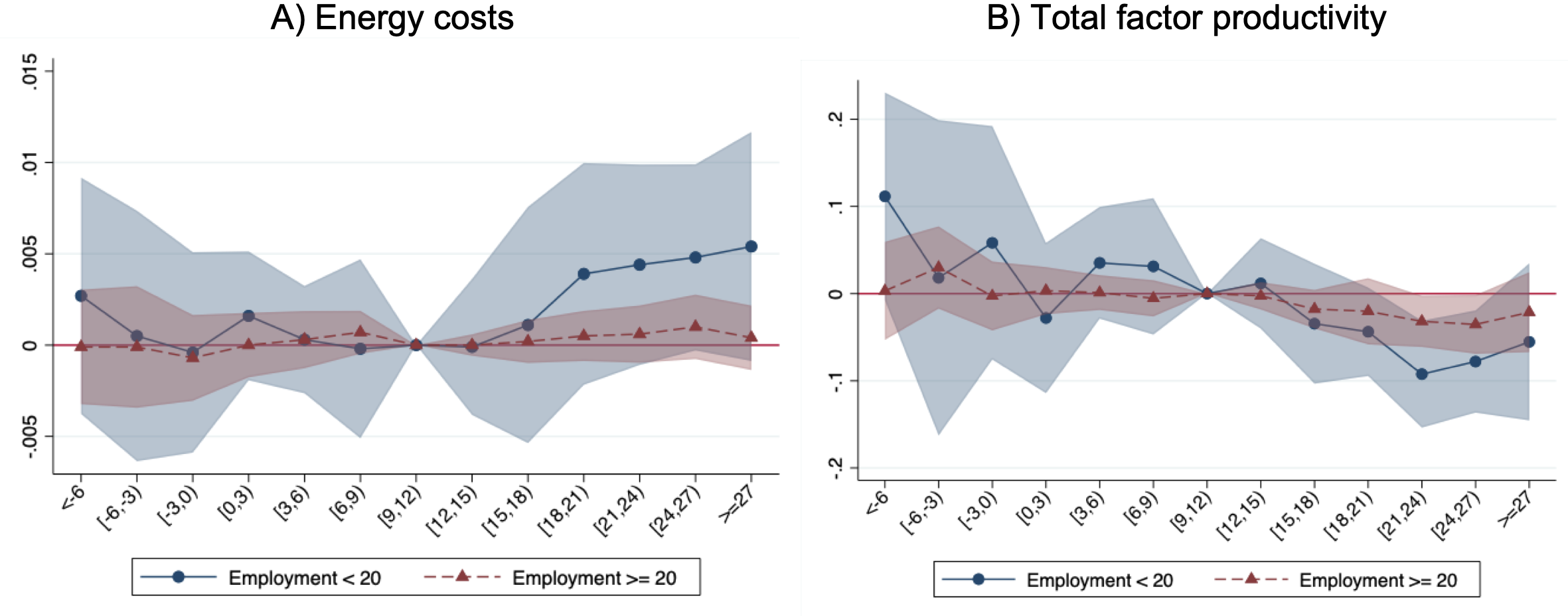The impact of climate change on economic activity, health, and social outcomes is at the centre of the political debate, the subject of countless scientific reports, and omnipresent given near-daily media coverage. The US Environmental Protection Agency examines the impact of climate change on socially vulnerable populations (EPA 2021), the World Health Organization links climate change and mitigation to human health outcomes (WTO 2023), and a White House initiative aims at protecting outdoor workers and households (The White House 2021). Recent Vox columns discuss the effects of climate change on financial sector losses (Reinders et al. 2023), public debt in Europe (Gagliardi et al. 2022), and house prices in Italy (Cascarano and Natoli 2023), and suggest how to finance adaptations to climate change (Zettelmeyer et al. 2022).
Climate change discussions are further spurred by recent extreme weather events. In 2023, the US saw record-breaking heat in July, the fourth warmest February on record, and a previously unachieved record number of 15 weather and climate disaster events, each of which exceeded $1 billion in damages, between January and July. But what we observe in 2023 is also a continuation of four decades of accelerated global warming and will likely persist indefinitely. Over the past century, and especially since the 1980s, average temperatures in the continental US have increased substantially (IPCC 2021) (see Figure 1). Between the 1980s and the 2010s, the median increase in temperature across US counties was 0.6°C, with nine in ten counties experiencing an increase in average temperatures. The US (particularly the South) is expected to continue to experience increases in temperature even under stringent and intermediate scenarios for the mitigation of greenhouse gas emissions (see Figure 2).
Figure 1 Temperature trends in the US, 1901-2020
Note: The figure shows annual and decadal temperature dynamics over the 1901-2019 period on the basis of temperature data obtained from the National Oceanic and Atmospheric Administration (NOAA). The underlying data covers 48 contiguous US states. Annual anomalies (red and blue bars) are defined as the difference between the annual average temperature across the 48 states and the average annual temperature over the 1901-2000 period. The moving average of the anomaly (line) is based on ten years of anomaly observations centred around years [-4;5].
Figure 2 Distribution of temperature days by bin over time
Note: The figure shows decadal US long-run temperature projections on the basis of big data generated by Hsiang et al. (2017) for the 1980s to 2090s. The underlying data is based on 44 climate models. Shown are projections under a Representative Concentration Pathway (RCPs) used to describe an intermediate mitigation scenario for greenhouse gas (GHG) emissions and atmospheric concentrations. Each bar shows the average annual number of days for respective 3°C bins (x-axis) for a range of decades (colour-coded bar), averaged across US counties.
In our study (Ponticelli et al. 2023), we provide new evidence on the implications of climate change for US manufacturing. Our results show that in the short run, additional hot days significantly increase energy costs and lower productivity among small manufacturing plants. In addition, higher temperatures discourage entry of new manufacturing facilities but do not typically affect large existing plants. In the long run, US counties that experienced higher increases in average temperatures between the 1980s and the 2010s experienced a reallocation of labour from small to large manufacturing establishments and increased local concentration of manufacturing activity. In our work, we discuss why large manufacturing firms might be better equipped to adapt to climate change. Potential reasons include the ability to hedge across locations, better access to finance, and higher managerial skills.
Data
We employ three datasets to measure manufacturing activity between the 1980s and the 2010s. We combine the Census of Manufacturing Firms (CMF) and the Annual Survey of Manufacturers (ASM) data to measure plants’ energy costs, productivity, and size, and the Longitudinal Business Database (LBD), an administrative register that tracks all business establishments, to identify plant entry and exit in different geographic locations. We use historical weather data for the contiguous US over the 1950-2019 period to capture the weather and temperature-related changes. These data are provided by the PRISM Climate Group and we use a cleaned version provided on Wolfram Schlenker’s homepage.
Short-run effects
We examine whether or not local temperature shocks have immediate (short-run) effects on manufacturing plants. Our analysis delivers two key findings. First, input costs associated with temperature management (e.g. electricity and fuel costs) and productivity (measured by total factor productivity) react to contemporaneous temperature shocks. Figure 3 illustrates that plants located in ZIP Codes with a greater number of days in high-temperature bins (particularly days above 18°C) experienced increased energy spending (Panel A) and decreased plant productivity (Panel B). Economically, a year with 100 additional degree days
in temperature bins above 18°C generates a 0.2 percentage point increase in energy costs as a share of the value of the shipment, which corresponds to a 9% increase in the sample average. Similarly, a year with 100 additional days in the temperature bins above 18°C generates a 4 percentage point decline in total factor productivity and a 7 percentage point decline in labour productivity as measured by value added per hour worked.
Figure 3 Short-run effect of temperature on energy costs and productivity
The figure shows the point estimates and the 95% confidence intervals when using a panel regression approach to estimate the short-run effect of temperature on energy costs divided by the total value of shipments (left) and total factor productivity (right). The analysis is at the plant-year level and the sample period comprises 1977-2018. The coefficients shown along the x-axis represent days in each respective temperature bin in a given year in a plant’s zip code. The number of days in a temperature bin is divided by 100 for readability and the temperature bin [9°C,12°C) is used as the reference bin and therefore omitted. Control variables include average zip code-year level precipitation, as well as the number of hurricanes and the number of tornadoes at the county-year level. Plant, industry-year, and state-year fixed effects are also included. Underlying regressions are estimated using ASM sample weights.
Second, the aforementioned effects are concentrated in small manufacturing plants, while large establishments are mostly unaffected. Figure 4 illustrates this finding for energy costs (Panel A) and total factor productivity (Panel B) for plants with fewer than 20 employees (blue) and plants with more than 20 employees (red).
Figure 4 Short-run effect of temperature on energy costs and productivity by firm size
Note: The figure shows the point estimates and 95% confidence intervals when using the panel regression approach described in Figure 3 to estimate the short-run effect of temperature on energy costs divided by the total value of shipments (Panel A) and total factor productivity (Panel B) but splitting plants into those with strictly fewer than 20 employees (blue) and those with more than 20 employees (red).
Despite these negative effects on energy costs and productivity among small plants, we find no significant effects on down-scaling (measured by employment) or exit, although hotter than usual temperatures dissuade entry. It is plausible that key industrial decisions such as scaling back on the size of an existing plant or exiting a given market are not driven by yearly weather shocks, especially if such shocks are interpreted as idiosyncratic and therefore likely to revert in the following years. On the other hand, the cumulative effect of several years of warmer-than-usual weather might push managers to respond on the intensive and extensive margins since they might indicate a shift in the climate distribution, an idea we investigate next.
Long-run effects
We next investigate how long-run changes in climate conditions affect manufacturing activity in the US. We use a long differences approach as in Burke and Emerick (2016) and examine whether changes in manufacturing activity between the 1980s and the 2010s are due to climate changes. We measure changes in climate conditions using changes in cooling degree days (CDDs) and heating degree days (HDDs) in a given county. These measures aim to capture changes in the energy needed for cooling or heating an environment so that its temperature remains at 18°C (64.4°F). Our analysis is at the county level, and we control for state-specific common trends in climate change, as well as differential trends across counties with different initial observable economic and social characteristics.
We find that over our sample period, counties that got warmer at a faster pace experienced larger declines in the number of small plants but no differential change in the number of large plants. However, the point estimates on employment indicate that large plants were able to absorb at least part of the labour force lost by smaller plants. This indicates a faster reallocation of employment from small to large plants in counties that experienced a higher increase in temperature during our sample period.
Next, we investigate the impact of higher average temperatures on different measures of industrial concentration at the county level. We find that counties that in the 2010s had a standard deviation higher increase in temperature – about 100 degree days per year above 18°C – relative to the 1980s decade, experienced a 1.4 percentage point larger increase in the share of employment concentrated in the top five largest plants, and a 5.1% larger increase in the Herfindahl-Hirschman concentration index.
Concluding remarks
We present evidence consistent with the notion that the adverse effects of climate change tend to be concentrated on small firms. In the short term, increases in hot days typically reduce manufacturing productivity and increase energy costs; in the long run, higher temperatures lead to increased concentration in local manufacturing activity among large plants. This suggests that such plants might be better equipped for long-run adaptation to climate change. Several potential mechanisms can rationalize this result. Large plants are more likely to be part of multi-plant firms, which are naturally better hedged to absorb weather shocks, even when they occur at a higher frequency due to climate change, because they produce output in different locations, diversifying climate risk (Castro-Vincenzi 2022). Large plants might also have better access to external finance, which allows them to cope with weather shocks, reducing the need to downscale employment or close plants. Finally, large plants might have better-trained managers who understand the change in firm exposure to climate risk and invest in adaptation. This hypothesis builds on two findings documented in the literature: large US firms tend to be better managed (Bloom et al. 2019), and better-managed firms are less energy-intensive and more productive (Bloom et al. 2010, Martin et al. 2012).
One implication of our results is that the presence of large firms with the means to adapt to long-run climate changes could be an important factor in preserving employment locally and limiting out-migration from regions more affected by climate change. On the other hand, the differential effect of temperature on small firms might have detrimental effects on outcomes associated with small-scale firms, such as “radical” innovations, as some previous work suggests (Prusa and Schmitz Jr. 1991), or even become a barrier to entrepreneurship in regions more affected by climate change.
References
Bloom, N, E Brynjolfsson, L Foster, R Jarmin, M Patnaik, I Saporta-Eksten and J Van Reenen (2019), “What drives differences in management practices?”, American Economic Review 109(5): 1648–1683.
Bloom, N, C Genakos, R Martin and R Sadun (2010), “Modern management: Good for the environment or just hot air?”, The Economic Journal 120(544): 551–572.
Burke, M and K Emerick (2016), “Adaptation to climate change: Evidence from US agriculture”, American Economic Journal: Economic Policy 8(3): 106–40.
Cascarano, M and F Natoli (2023), “Hot temperatures: A new player in housing markets”, VoxEU.org, 17 September.
Castro-Vincenzi, J M (2022), “Climate hazards and resilience in the global car industry”, Working paper.
EPA (2021), “Climate Change and Social Vulnerability in the United States: A Focus on Six Impacts”, US Environmental Protection Agency, EPA 430-R-21-003.
Gagliardi, N, P Stéphanie and P A Sánchez (2022), “The fiscal impact of extreme weather events: First evidence for EU countries”, VoxEU.org, 23 December.
IPCC (2021), Climate change 2021: The Physical Science Basis, Contribution of Working Group I to the Sixth Assessment Report of the Intergovernmental Panel on Climate Change 2.
Martin, R, M Muˆuls, L B De Preux and U J Wagner (2012), “Anatomy of a paradox: Management practices, organizational structure and energy efficiency”, Journal of Environmental Economics and Management 63(2): 208–223.
Ponticelli, J and Q Xu and S Zeume (2023), “Temperature and Local Industry Concentration”, available at SSRN.
Prusa, T J and J A Schmitz Jr (1991), “Are new firms an important source of innovation?: Evidence from the pc software industry”, Economics Letters 35(3): 339–342.
Reinders, H J, D Schoenmaker and M V Dijk (2023), “Climate risk stress tests underestimate potential financial sector losses”, VoxEU.org, 28 June.
The White House (2021), “FACT SHEET: Biden Administration Mobilizes to Protect Workers and Communities from Extreme Heat”.
WTO (2023), “A framework for the quantification and economic valuation of health outcomes originating from health and non-health climate change mitigation and adaptation action”, Technical Documnent, 4 May.
Zettelmeyer, J, U Panizza, M Gulati, L Buchheit and P Bolton (2022), “Climate and debt”, VoxEU.org, 3 October.










